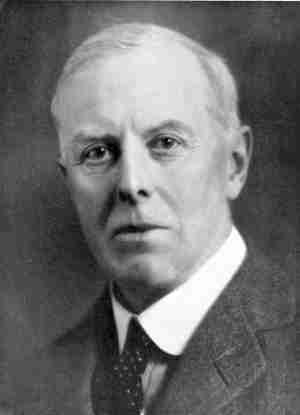- John Sealy Townsend
Infobox Scientist
box_width = 300px
name = John Townsend
image_size = 300px
caption = John Sealy Edward Townsend (1868-1957)
birth_date = birth date|1868|6|7|mf=y
birth_place =Galway ,County Galway ,Ireland
death_date = death date|1957|2|16|mf=y
death_place =Oxford, England
citizenship =United Kingdom of Great Britain and Ireland
fields =Physicist
workplaces =Oxford University
alma_mater =Trinity College, Dublin
Cambridge University
doctoral_advisor =
academic_advisors =J. J. Thomson
doctoral_students =Victor Albert Bailey Henry Brose
notable_students =
known_for =Townsend discharge Ramsauer-Townsend effect Townsend (unit)
author_abbrev_bot =
author_abbrev_zoo =
influences =
influenced =
awards =Hughes Medal (1914)
religion =
footnotes =John Sealy Edward Townsend (7 June 1868 - 16 February 1957) was a
mathematical physicist who conducted various studies concerning theelectrical conduction ofgas es (concerning thekinetics ofelectron s andion s) and directly measured theelectrical charge . He was aWykeham Professor of physics atOxford University .Career
He was born in Galway, County Galway,
Ireland , son of Edward Townsend, a Professor of Civil Engineering atQueen's College, Galway . In 1885, he enteredTrinity College Dublin and came top of the class in maths with a BA in 1890. He became a Clerk Maxwell Scholar and enteredTrinity College, Cambridge where he became a research student at the same time asErnest Rutherford .At theCavendish laboratory , he studied underJ. J. Thomson . He developed the "Townsend's collision theory". Townsend supplied important work to the electrical conductivity of gases ("Townsend discharge " circa 1897). This work determined the elementary electrical charge with the droplet method. This method was improved later byRobert Andrews Millikan .In 1900, he became a professor at Oxford. In 1901, he discovered the ionization of molecules by ion impact and the dependence of the mean free path on
electron s (in gases) of the energy (and his independent studies concerning the collisions between atoms and low-energy electrons in the 1920s would later be called theRamsauer-Townsend effect ). OnJune 11 ,1903 , he was elected toFellow of the Royal Society (FRS). He was awarded theHughes Medal in 1914. DuringWorld War I , he researched (atWoolwich, London, England )wireless methods for theRoyal Navy Air Service . He was knighted in 1941. He died inOxford, England .He married May Georgina, also from County Galway, and they had two sons.
Townsend was a laboratory demonstrator when
Brebis Bleaney was an undergraduate. Bleaney recounts an occasion when Townsend gathered together all the demonstrators and proceeded to refute both quantum mechanics and relativity.Works
* "The Theory of Ionisation of Gases by Collision" (1910)
* "Motion of Electrons in Gases" (1925)
* "Electricity and Radio Transmission" (1943)
* "Electromagnetic Waves" (1951)References
*"Top 1000 Scientists: From the Beginning of Time to 2000 AD" Philip Barker ISBN 81-7371-210-7
*A. von Engel "John Sealy Edward Townsend. 1868-1957," "Biographical Memoirs of Fellows of theRoyal Society ", Vol. 3, Nov., 1957, pp. 256-272.
*B. Bleaney, "Two Oxford Science Professors, F. Soddy and J. S. E. Townsend," "Notes and Records of the Royal Society of London," Vol. 56, No. 1, 2002, pp. 83-88External links
* " [http://www.bath.ac.uk/ncuacs/guidet-v.htm#TownsendJSE Papers and correspondence of Sir John Sealy Edward Townsend] , 1868-1957". Bodleian Library, Oxford. ("ed". compiled between 1914-1957.)
* [http://www.townsend-family.info/record.php?ref=6B30 Entry in The Townsend (Townshend) Family Records]
Wikimedia Foundation. 2010.
